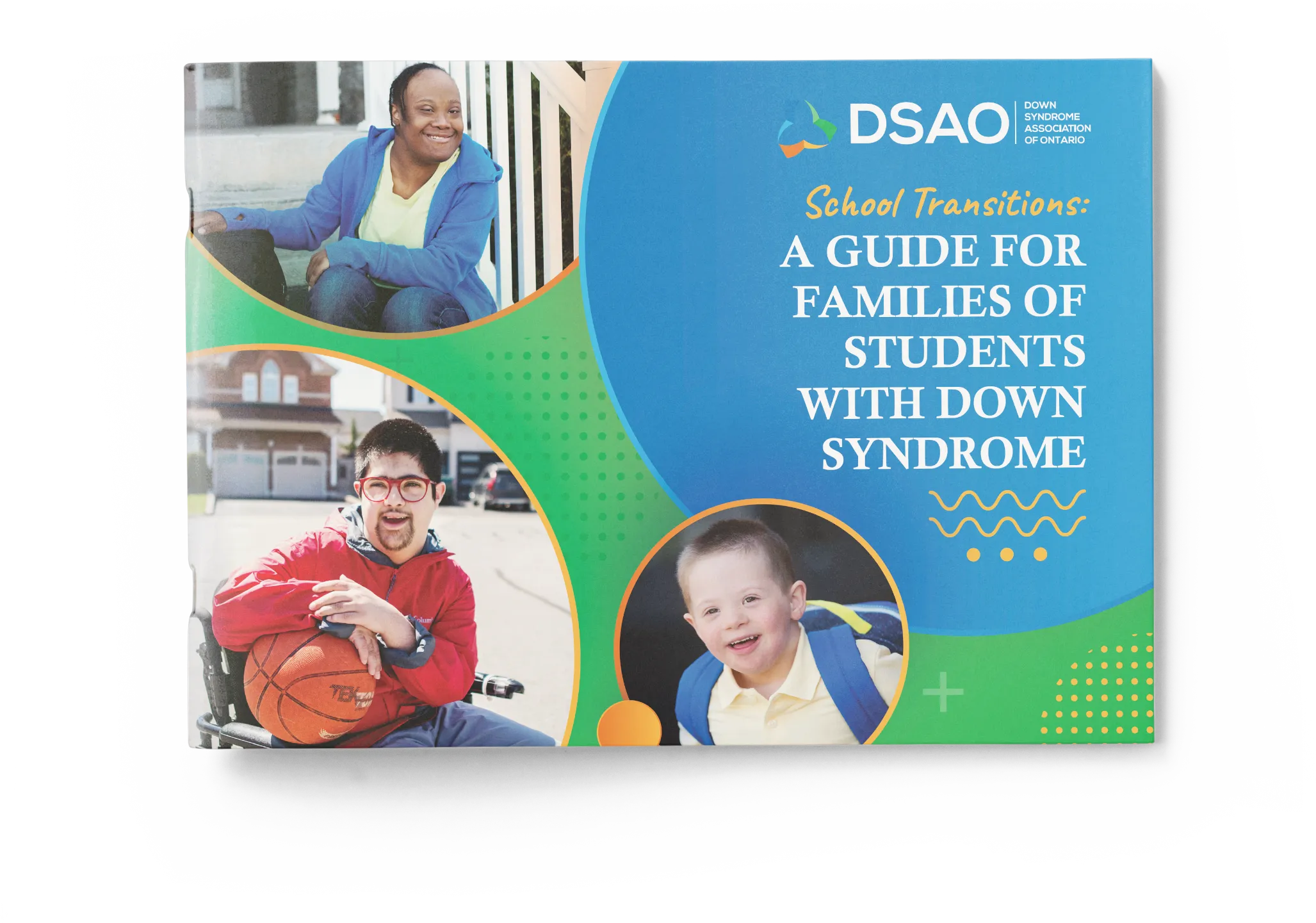Why a resource about transitions?
Transitions are defined as changes from one situation to another, and transitions bring both difficulties and opportunities to the lives of students with Down syndrome.
When transition planning is done in an atmosphere of trust and positive expectations, it allays worries and rededicates everyone to the ongoing effort to help the student with Down syndrome achieve to their highest capacity.
Transition planning for students with Down syndrome is effective when:
- everyone involved is familiar with the purpose of each step of the transition planning process and agrees on the rights of the parents and the student with Down syndrome to contribute their expertise and express their preferences
- there is respect for the culture, language and prior learning of each family
- all parties participate and communicate in good faith, using plain language, and with a willingness to sympathetically overcome gaps in understanding
- the student’s individual needs, strengths and wishes are at the centre of the process
- there is agreement that the learning profile of students with Down syndrome is unique and typical solutions may not be particularly effective
- all parties are committed to the clarification of goals and roles, and mutual learning about how the student with Down syndrome learns best.
If properly done, transition planning
- helps the key players become aware of one another and prepare to work together
- clarifies expectations and reduces stress
- ensures continuity of service and the sharing of successful practices among school board personnel, agencies and partners
- supports the student with Down syndrome through positive and fulfilling school experiences.


